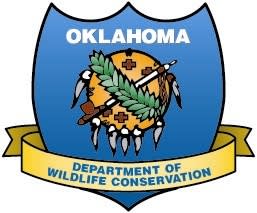Airborne Surveys Confirm Oklahoma’s Waterfowl Woes

With another season of duck hunting now in the books, many of the state’s waterfowl hunters have reported a season of overall fewer ducks and geese, and limited to mixed hunting success.
Pre-season surveys in the northern United States and Canada indicated last spring’s duck population was at an all-time high of 48.6 million birds. But the number of ducks and geese in Oklahoma during the first week of January appeared to be lower compared to the same period in 2012, said state Wildlife Department personnel who participated in the annual Mid-Winter Waterfowl Population Survey conducted by the U.S. Fish and Wildlife Service. However, the reason for the lackluster season was not necessarily due to the overall bird population.
“This year, Kansas, Nebraska and Oklahoma seem to be in the worst shape, as far as habitat for waterfowl,” said Terry Liddick of Spearfish, S.D., a U.S. Fish and Wildlife Service pilot-biologist who flew a survey aircraft this winter in Oklahoma.
The situation that hunters have faced this year was similar to or worse than what they experienced in the 2011-12 season, said Josh Richardson, migratory game bird biologist with the Oklahoma Department of Wildlife Conservation. “It’s unfortunate our local conditions the past two years have made for average to below-average hunting seasons in Oklahoma,” he said.
Read almost any edition of ODWC’s biweekly Waterfowl Report this season, and the most prevalent words have been “poor,” “low” and “below normal.”
Again this year, the Department partnered with the federal agency to conduct the waterfowl survey in Oklahoma. Richardson and Jeff Neal, a migratory game bird technician with ODWC, spend about 50 hours in two small aircraft as observers from Jan. 7 to Jan. 14, flying low and slow across the state to count waterfowl and other migratory birds.
Richardson, who surveyed western areas of Oklahoma, said he counted fewer ducks and geese this year than he has in recent years. His preliminary numbers this year are about 40 percent less than his survey results from last year.
Richardson said what he saw on his survey flights was “pretty discouraging,” with poor habitat conditions across western Oklahoma. He said when food and water are not plentiful, the area will not hold waterfowl for very long. He speculates the ongoing drought along with milder weather conditions have conspired to keep many migratory birds from stopping over in, or even reaching, Oklahoma.
Neal surveyed eastern areas of the state, and his observations were mixed. Overall, though, Neal said waterfowl numbers seemed to be below average. A few areas he surveyed were holding a near-average number of ducks, where the habitat conditions were close to normal. But many reservoir areas were in poor shape, with great expanses of bare ground due to lack of water.
During last year’s mid-winter aerial survey, Wildlife Department surveyors both in aircraft and on the ground counted 293,175 ducks; 364,106 geese; 1,532 coots; 6,680 sandhill cranes; and five swans in the state during the first week in January. And while the total numbers from the latest survey are not yet available, it’s a safe bet that fewer ducks and geese were counted this year.
Oklahoma’s Department of Wildlife Conservation has teamed with the U.S. Fish and Wildlife Service in surveying waterfowl populations for decades. The mid-winter aerial waterfowl count conducted in January each year is one of the oldest wildlife surveys, dating to the 1930s.
For the survey, teams of pilot-biologists and observers employ aircraft to crisscross North America at tree-top level, counting the number of ducks, geese and swans, and assessing the quality and quantity of wetlands and breeding areas, while ground crews cover additional areas. The survey flights are conducted within a one-week period, weather permitting, across the U.S. so as to minimize any double-counting of migrating birds.
These surveys are a model of partnership-driven conservation. Analysis of the survey data helps determine the status of North America’s waterfowl populations and plays a significant role in formulating annual waterfowl hunting regulations for the season
to come. Surveys such as these are vital tools that guide decisions of waterfowl managers throughout North America.

